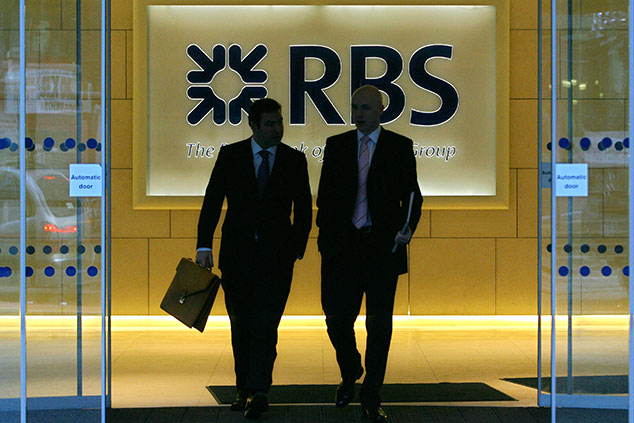
This article is taken from our FREE daily investment email Money Morning.
Every day, MoneyWeek’s executive editor John Stepek and guest contributors explain how current economic and political developments are affecting the markets and your wealth, and give you pointers on how you can profit.
.
I’ve been thinking a lot about booms and busts recently – as you do.
They say that nobody rings a bell at the top of the market. But if you look back at any of the biggest bubbles of recent history, there have typically been some pretty big clues that we must be getting there.
Sure, no one comes over the tannoy to announce: “Ladies and gentlemen, your bull market is now over. If you’d like to make your way to the exits in an orderly fashion, we can commence the bear market after a suitable period of futile dip-buying and rising panic.”
However, within a few months of the top, we almost always get a mega-deal. Or if not a mega-deal, an event so peculiar that it would be inconceivable in any other environment.
That sounds too easy. But let me talk you through it…
The show’s not over until the mega-deal sinks
Looking through recent history, it appears that no top is complete without a mega-deal.
We’re not just talking about any old deal. These deals stand out. Even at the time, they make anyone with any sense think: “Oh my – that’s a toppy deal”.
We’re talking about deals of such ludicrous expense, and so larded with symbolism, that any self-respecting novelist would strike the idea from their copy as being far too obvious a metaphor for hubris and pending doom.
At the top of the Japanese bubble of the 1980s, the great fear was that the US was yesterday’s country, and Japan would end up being the dominant economic power (America has been stressing about its own decline since pretty much day one – it’s tough at the top.) The pinnacle of this humiliation came when Mitsubishi Estate bought the Rockefeller Center for $1.4bn, a then-record deal.
The rising global power buys a trophy monument, named after one of the founding fathers of American capitalism, right in the heart of New York’s wealthiest district. I mean, how much more heavy-handed can you get?
Anyway, a few weeks later, the Japanese stockmarket peaked, and that was that.
At the top of the dotcom bubble, AOL – a big internet media company – and Time Warner – a big “old media” company merged. Again, the deal was colossally expensive. It happened in January 2000. In March that year, the Nasdaq topped out.
In summer 2007, at the peak of the British banking bubble, an RBS-led consortium and Barclays indulged in a battle of the alpha baboons over ABN Amro. RBS won, even as Northern Rock was going bust. The world’s biggest bank takeover completed in October 2007, the same month that global stocks peaked.
In May 2011, at the peak of the commodities supercycle, Glencore, the biggest commodities trading house in the world, went public in what was the largest international IPO ever seen in London. Commodities as a whole topped out that month. Gold topped out later that year.
In summer 2016, at the peak of what we might one day think of as the “safe assets” and central-banking bubble (although that’s not very punchy), deflation-and-Brexit-fevered investors paid the Swiss government money in order to be allowed to lend to it for 50 years. Since then, government bond yields have only ticked higher.
The next big blow-up
I’m sure you can pick holes in some of these stories. These deals often occurred amid an orgy of M&A – perhaps you could argue that I’m cherry picking. But the point is – these deals were all noteworthy even at the time.
So now I’m wondering – what’s next?
This time I’m thinking that the place to watch is probably corporate bonds. It makes the most logical sense. Equities might be expensive, but they are not ground zero this time around.
Companies in the US have been switching equity for debt hand over fist – the level of corporate debt outstanding is now at record levels. It’s also at the highest level relative to US GDP on record (at 73.3%). And relative to earnings, it’s at its highest level since 2003 (bear in mind that this is at a time when earnings are very strong).
On top of this, as the FT’s Robin Wigglesworth notes, credit-rating agency Moody’s has flagged up just how poor creditors’ protections are generally. “Covenants remained extremely lax in 2017”. In essence, this has allowed “low-rated issuers to add more risk at no cost”.
So there’s still plenty of exuberance in the market, despite glimmers of rising interest rates and a changing environment. If you needed further proof, last week, CVS Healthcare, a US chain of pharmacies, managed to get away with borrowing $40bn – the third-biggest corporate bond issue in history – with no problems at all. The money is being used to fund the acquisition of Aetna, a health insurer.
Top of the market? Not quite. It doesn’t feel extravagant enough. I’d like to see something more headline-grabbing. We’re looking for the biggest debt issue ever, made to fund something truly hubristic – a deal involving electric cars, cryptocurrencies, social media maybe – preferably all three.
But we’re getting there.